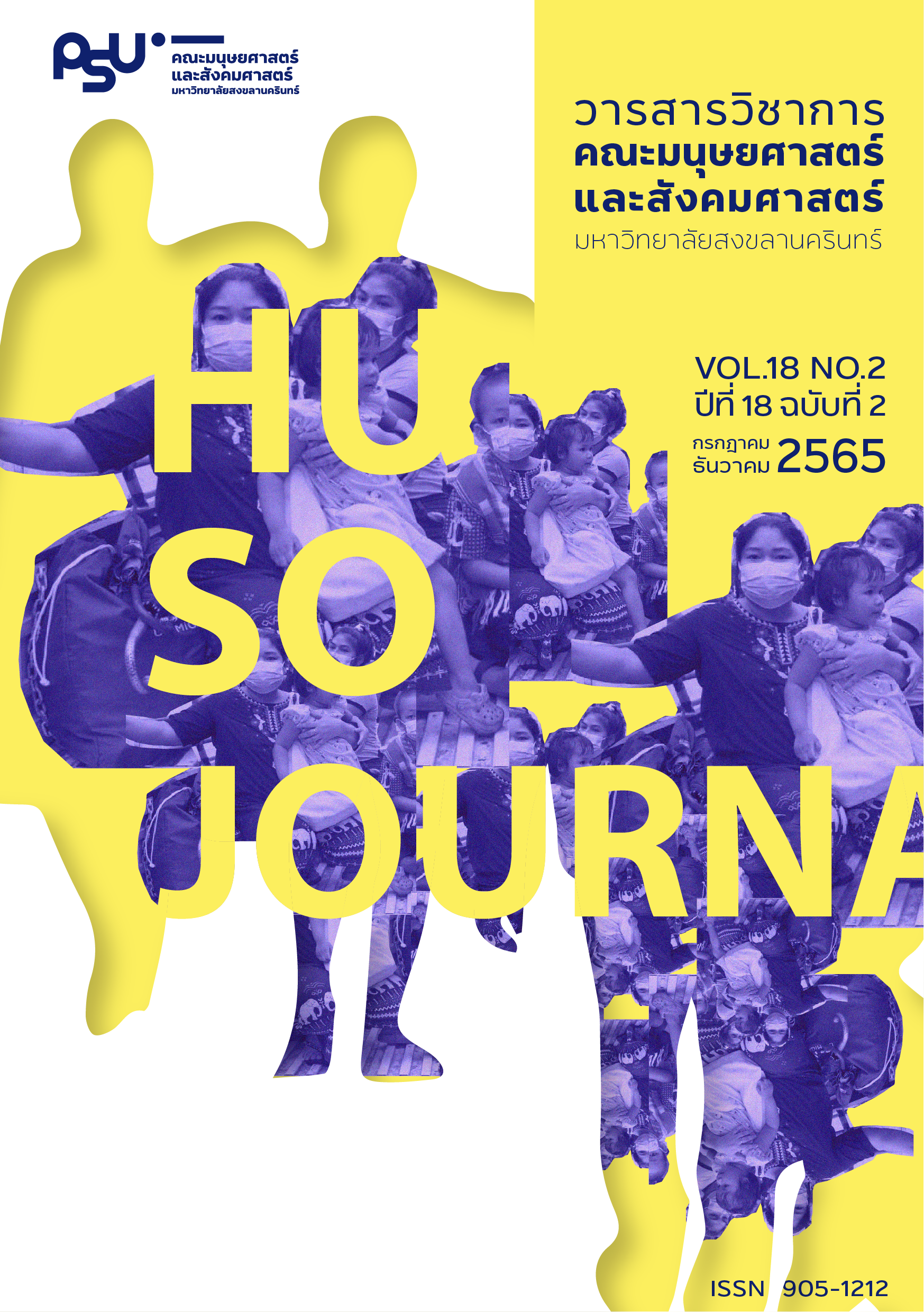Physical, mental, and social impacts on children with mobile phone addiction
Keywords:
impact, behavior, mobile phoneAbstract
This study applies a mixed methods approach by collecting quantitative data. Its objective is to address the physical, mental, and social impacts on children who are addicted to mobile phones. The sample group includes 30 children aged 11 and 12 years who live in Moo 8, Ai Satia Village, Bukit Sub-district, Cho Airong District, Narathiwat Province. Data was collected through field visits, surveys on problems and mobile phone addiction behavior, and interviews. Quantitative data were analyzed using mean and percentage, and qualitative data using content.
es. 73 percent spent 1-2 hours on the phone, 23 percent 3-4 hours, and four percent more than six hours. 86.7 percent used their mobile phone to watch YouTube videos and play games. In terms of physical impacts, 35 percent were found to have skipped meals and showers, 17 percent suffered a headache, 13 percent had back pain, and nine percent had fatigue as well as eyesight problems. As for mental effects, 43 percent became temperamental and impulsive, and 21 percent aggressive. Social effects include 90 percent being non-sociable, 7 percent being irresponsible, and 3 percent being unconfident.
Results show several impacts of mobile phone addiction which cannot be overlooked. These physical, mental, and social effects can potentially lead to many other problems such as domestic violence, developmental issues, slowed learning capabilities, mental disorders, and so on. It is extremely necessary to prevent these problems with the help of family, school, and community which are closest and most understanding for the children. By working together, they will be able to contain the impacts of mobile phone addiction on children and teach them to use their devices in more creative ways.
References
ผู้จัดการออนไลน์. (2562, 20 มกราคม). อันตรายจากโทรศัพท์มือถือที่(เผื่อ)คุณพ่อคุณแม่ยังไม่รู้. [บล๊อก]. สืบค้นจาก https://www.dmh.go.th/news-dmh/view.asp?id=28471.
กองสถิติเศรษฐกิจ สำนักงานสถิติแห่งชาติ. (2564). สรุปผลที่สำคัญสำรวจการมีการใช้เทคโนโลยีสารสนเทศและการสื่อสารในครัวเรือนพ.ศ.2563, ม.ป.ท : สำนักงานสถิติแห่งชาติ.
นันทวรรณ ผ่องมณี. (2555, 21 พฤศจิกายน). ผลกระทบจากการใช้โทรศัพท์มือถือ. [บล๊อก] สืบค้นจาก http://www.ns.mahidol.ac.thenglish/th/degree_bns/km_mobile.html
รัตนา สิงห์โต และคณะ (2562). ภัยเงียบที่อาจเกิดแก่ทารกแรกเกิดจากโทรศัพท์มือถือ.... ป้องกันไว้ก่อนดีกว่าตามแก้ทีหลัง. วารสารการพยาบาลและการศึกษา, 12(2), 1-11.
ราณี วงศ์เดช และคณะ (2561). พฤติกรรมการใช้สื่อของเด็ยุคศตวรรษที่21. วารสารวิทยาลัยสงฆ์นครลำปาง, 7(2), 26-36.
วรเชษฐ์ โทอื้น (2562). ปัจจัยเชิงสาเหตุและแนวทางป้องกันพฤติกรรมอันไม่เหมาะสมต่อการใช้โทรศัพท์มือถือ ของนักศึกษาวิทยาลัยศาสนศาสตร์ยโสธร เพื่อการครองตนตามหลักพระพุทธศาสนา. วารสารมหาจุฬานาครทรรศน์, 6(10), 4760-4770.
โสภณา จิรวงศ์นุสรณ และคณะ (2561). อันตรายที่แฝงมากับโทรศัพท์มือถือ. วารสารวิจัยราชภัฏพระนคร สาขาวิทยาศาสตร์และเทคโนโลยี, 13(1), 164-177.
อมรรัตน์ วงศ์โสภา และคณะ (2558). พฤติกรรมการใช้และผลกระทบของสื่อสังคมออนไลน์ประเภทเฟซบุ๊คต่อการดำเนินชีวิตของนักศึกษา กรณีศึกษามหาวิทยาลัยราชภัฏเลย. วารสารงานวิจัยและพัฒนา มหาวิทยาลัยราชภัฏเลย, 10(33), 1-10.
เอื้อมทิพย์ ศรีทอง (2562). ศึกษาเรื่องพฤติกรรมการใช้โทรศัพท์มือถือของนักศึกษา สาขาสังคมศึกษา มหาวิทยาลัยราชภัฏเทพสตรี. วารสารมหาจุฬาวิชาการ, 6(ฉบับพิเศษ), 26-38.
Downloads
Published
How to Cite
Issue
Section
License
Copyright (c) 2022 Journal of Humanities and Social Sciences Prince of Songkla University

This work is licensed under a Creative Commons Attribution-NonCommercial-NoDerivatives 4.0 International License.
บทความนี้ได้รับการตีพิมพ์เป็นของวารสารวิชาการคณะมนุษยศาสตร์และสังคมศาสตร์ คณะมนุษยศาสตร์และสังคมศาสตร์ มหาวิทยาลัยสงขลานครินทร์ วิทยาเขตปัตตานี






